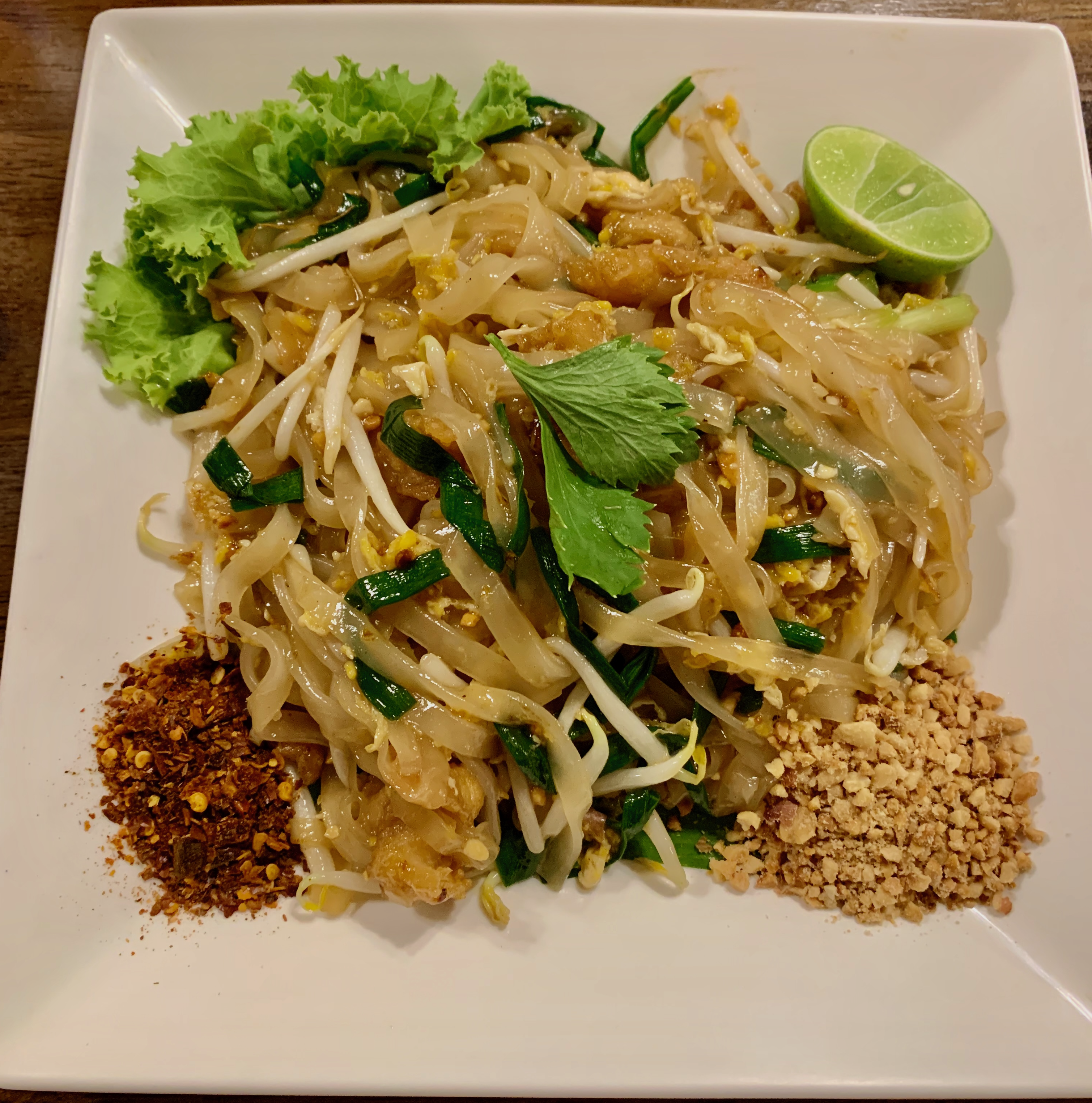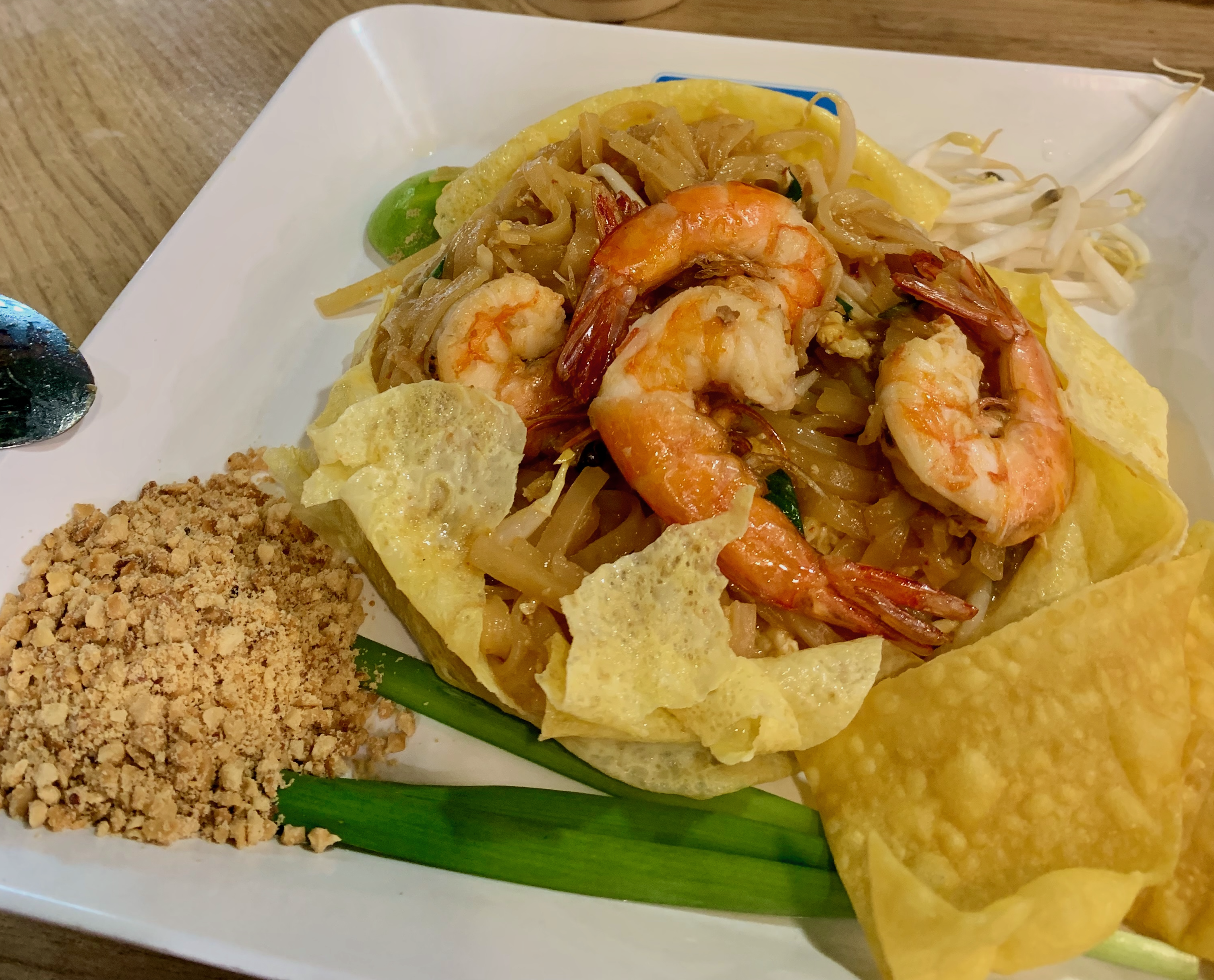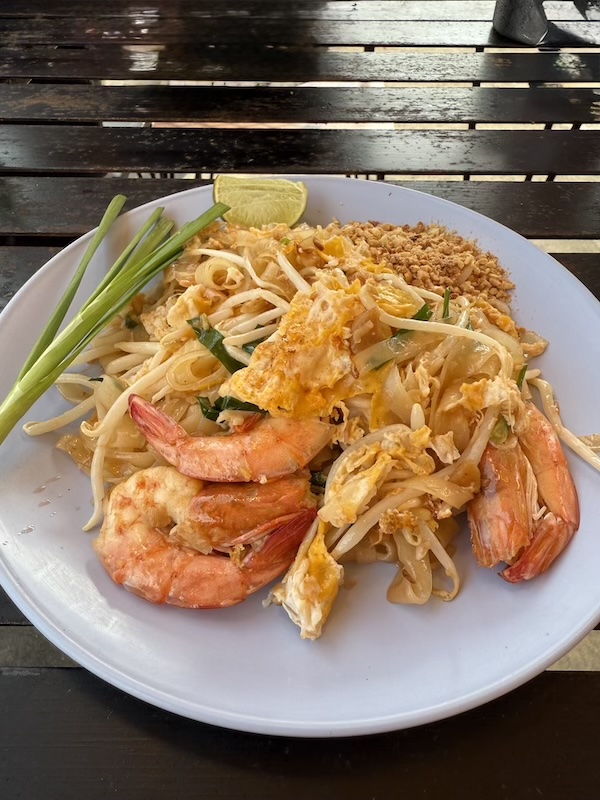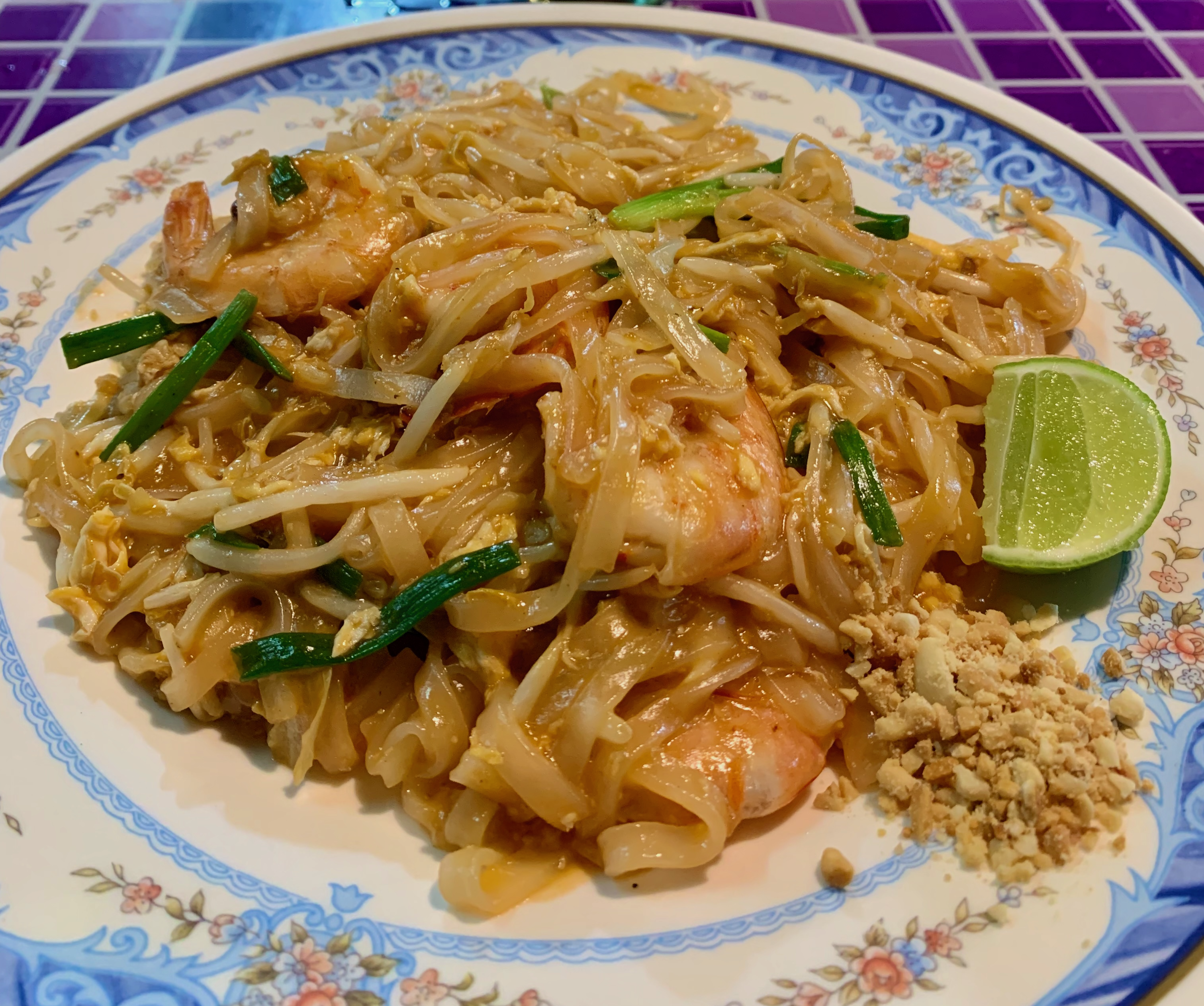Pad Thai is more than just a delicious noodle dish—it’s a symbol of Thailand’s history, national identity, and culinary creativity. This article explores its origins, cultural impact, and how it became a global favorite.
Origins and Cultural Impact of Pad Thai
Looking to explore exotic cuisine that tells a story? Pad Thai — Thailand’s most iconic national dish — might be your next flavorful adventure. Created in the early 1940s, this dish blends tradition, innovation, and bold taste in every bite.
In this article, we’ll explore the Pad Thai history, its cultural significance, and what makes it such a beloved symbol of Thailand. To better understand the historical context and national identity that shaped Pad Thai, read our complete history of Thailand.
What Is Pad Thai?

Pad Thai is a staple of Thai cuisine known around the world. It features rice noodles stir-fried with ingredients like dried shrimp, tofu, and topped with a squeeze of lime for that signature tang. Its distinctive sauce—usually made with tamarind, fish sauce, and palm sugar—offers a bold balance of sweet, salty, and umami flavors. This dish reflects a shift in Thailand’s culinary identity, standing as a flavorful response to earlier Siamese traditions. Its success lies in its ability to combine contrasting textures and flavors into a single harmonious plate.Pad Thai’s global popularity only continues to grow, making it a cultural ambassador of Thai gastronomy. → Explore more about Thai cuisine on Wikipedia.
The History Behind Pad Thai

Let’s rewind to the 1940s. Thailand was recovering from a severe economic crisis. To support national recovery, the government introduced Pad Thai as a tool for economic stimulus and cultural pride. Prime Minister Plaek Phibunsongkhram saw Pad Thai as a way to promote local ingredients and reduce dependency on expensive imports.
It became part of a wider effort to modernize Thai society and forge a distinct national identity.With simple ingredients like rice noodles and dried shrimp, Pad Thai quickly grew from a practical recipe into a symbol of national unity and culinary heritage. Rice noodles themselves had been introduced centuries earlier during the Ayutthaya Kingdom (15th–18th centuries). But Pad Thai turned them into a national treasure.Today, Pad Thai is not just food — it’s a bite of Thailand’s history.
What Makes Pad Thai So Unique?

This dish is a delicious blend of Thai, Chinese, and even Vietnamese culinary influences. The rice noodles (called banh pho in Vietnamese) combine with fermented fish sauce (nuoc-mâm) to create a rich umami base. Stir-fried eggs, shrimp or tofu, chopped peanuts, and fresh herbs and spices bring layers of flavor and texture. Every bite delivers crunch, softness, and zest all at once. Each portion tells a story — of resilience, reinvention, and culinary brilliance — turning a historical necessity into a global food icon.
🌶️ Want to explore more iconic street food? Discover our guide to 10 must-try Thai street snacks for a flavorful journey across Thailand’s sidewalks.
🍤 My Experience: A Special Pad Thai in Pratumnak

During a recent walk through Pratumnak, I stopped by a small food stall and enjoyed a delicious Special Pad Thai (ผัดไทยพิเศษ) for just 80 Baht. The portion was larger than usual, topped with extra shrimp and a perfectly crisp omelet — flavorful, satisfying, and totally worth it.
📍 You’ll find this gem at the entrance of Soi 5, right next to 7-Eleven. It’s part of a cluster of friendly street food vendors, also offering fresh smoothies — ideal for a local food break.
💬 Local tip: Want a bigger portion? Just say “พิเศษ” (pronounced Phi-sèt) after the name of the dish. It means “special” in Thai and usually gets you more protein, egg, or noodles for just a few extra baht.
The Traditional Recipe
Pad Thai offers a perfect harmony of sweet, sour, salty, and spicy elements. It’s quick to prepare and incredibly satisfying.
- Start with oil in a wok to prevent sticking and ensure high-heat cooking.
- Sauté firm tofu cubes for protein and texture.
- Add dried shrimp for a hit of deep umami flavor.
- Stir in pre-soaked rice noodles — soft but still chewy.
- Pour over the signature Pad Thai sauce: tamarind paste, sugar, fish sauce, and a hint of chili.
- Push the noodles aside and crack in an egg. Scramble it gently, then mix it all together.
- Add bean sprouts, spring onions, and loads of fresh herbs like cilantro or Thai basil.
- Finish with a wedge of lime — squeeze just before eating to brighten the dish.
Each step builds layers of flavor and texture, making Pad Thai more than just a meal — it’s a flavorful reflection of Thai culinary identity.
Want to try making it or simply craving a plate tonight? Learn how to order Pad Thai online in Thailand using delivery apps.
A Symbol of Thai Pride
Thanks to the vision of Prime Minister Phibunsongkhram, Pad Thai evolved from street food into a national symbol. Promoting local products and cultural independence, it stood as a flavorful act of soft power.
Pad Thai’s appeal lies in its balance — sweet, sour, salty, and spicy — all served in one harmonious dish. This culinary harmony reflects the richness of Thai traditions and the country’s ability to transform simplicity into excellence.
Every time you enjoy Pad Thai, you’re tasting more than a recipe — you’re experiencing a dish born of identity, resilience, and national pride.
Modern Twists on a Classic
In recent years, chefs across Thailand and beyond have put their own spin on Pad Thai. You might encounter versions made with zucchini noodles, plant-based protein, or even fusion toppings like kimchi or parmesan.
These adaptations keep the spirit of Pad Thai alive while reflecting today’s global tastes and dietary preferences. From vegan-friendly options to upscale gourmet takes, Pad Thai continues to evolve without losing its identity.
Conclusion
Pad Thai tells the story of a nation that turned adversity into flavor. It blends cultural heritage and culinary artistry in every bite, winning hearts around the world.
Frequently Asked Questions about Pad Thai
What is the origin of Pad Thai?
Pad Thai was introduced in the 1940s by the Thai government during an economic crisis. It was promoted to boost national pride and use local ingredients.
Is Pad Thai a traditional Thai dish?
Yes and no. While Pad Thai is now a beloved national dish, it was originally a modern invention designed to define a unique Thai identity, distinct from Chinese cuisine.
What makes Pad Thai unique?
Pad Thai combines sweet, salty, sour, and umami flavors in perfect balance. Ingredients like tamarind, fish sauce, peanuts, and lime create a rich and layered taste.
With endless variations and a story rooted in Pad Thai history, this dish is more than food — it’s a connection between past and present.
🔄 Last updated on June 8, 2025

